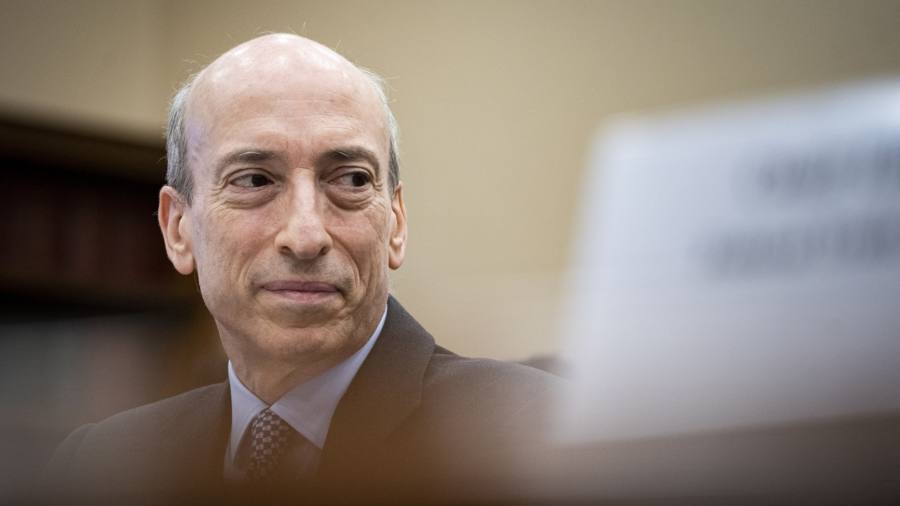
Wall Street’s top regulator is seeking to change the way stock and bond mutual funds set their daily prices in order to protect buy-and-hold investors from having to bear the cost of rapid inflows or outflows, a move that would add expenses for asset managers.
Gary Gensler, chair of the US Securities and Exchange Commission, said in a statement that the proposal would “build resiliency” for US open-end funds, which faced a liquidity squeeze in March 2020 as investors scrambled to redeem shares at the start of the pandemic. “I think this would lower some systemic risk,” he said.
The SEC proposal would require US funds that together hold more than $16tn in assets to adopt so-called swing pricing, a practice common among European funds. Essentially, fund administrators must wait until they know exactly how much money has come in or out before calculating the daily “net asset value” (NAV). That way the cost to the fund of having to buy or sell securities during a volatile trading session can be included in the per-share price that departing and arriving customers receive.
In Europe, funds that use swing pricing tend to require purchase and sale orders to arrive well before the deadline for setting the NAV. In the US, all funds set their NAV at 4pm New York time. Fund clients must place buy and sell orders before that time to receive that day’s price, but their brokers do not have to transmit the orders to the fund until later.
A 2017 Bank for International Settlements study found funds that used swing pricing had better returns during the 2013 “taper tantrum” — when the Federal Reserve shook markets by signalling a change in monetary stimulus — than those that did not. The practice did not substantially reduce volatility, however.
The SEC said an optional swing pricing rule exists, but no funds have used it because they lack timely flow of information.
The commission will vote on whether to propose the new requirements on Wednesday. If successful, the measure will move to a public comment period before coming back to the SEC for final approval and implementation.
Adding swing pricing would force US fund managers to substantially revamp their procedures and is likely to make it more costly to run mutual funds. If the proposal is enacted, brokers and other intermediaries would need to make changes to meet the 4pm deadline, and most brokers would likely set earlier cut-off times on placing orders, the SEC said.
This will be unwelcome news to a fund industry that is experiencing substantial fee compression and a shift by investors to exchange traded funds because they change prices more frequently and offer lower fees. The proposed rules would not apply to ETFs or money market funds.
The SEC is also proposing to require mutual funds to hold at least 10 per cent of their assets in highly liquid securities, which would be subject to stricter definitions to make sure they are easy to sell. Many equity funds already exceed this threshold, but the requirement could prove more of a challenge for bond funds.